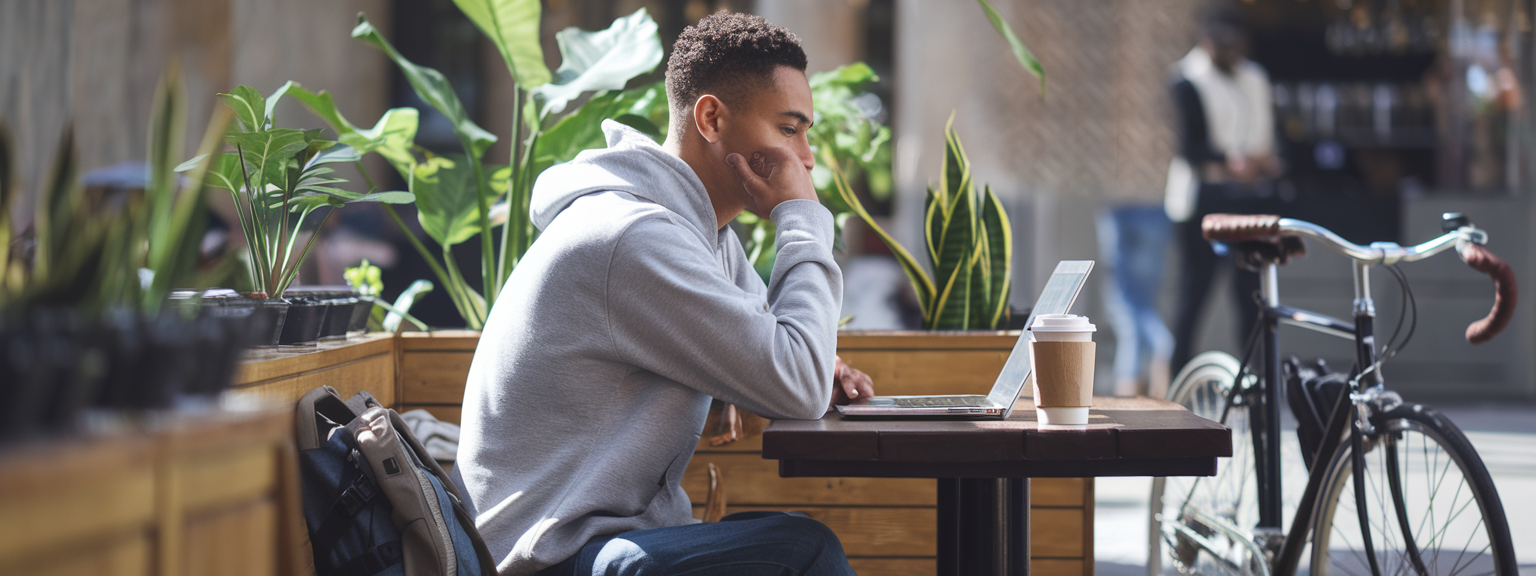Long-Term Travel Tips: Smart Strategies for Extended Trips
Long-Term Travel Tips are about building a sustainable rhythm that balances curiosity, comfort, and budget from month one onward. Whether you’re a digital nomad, on sabbatical, or embracing slow travel, extended trips need different systems than short vacations: smarter packing, long-term travel planning for visas and insurance, and routines that prevent burnout. This guide offers practical long term travel packing lists, visa renewal advice, budgeting strategies, and a sample slow-travel day/week plan you can adapt. Tired of overpacked bags, surprise visa headaches, or burning out after a few weeks? Read on — you’ll leave with concrete checklists, a sample rhythm-of-life itinerary, and insider tricks to stay comfortable, legal, and energized while abroad.
📍Must-See Attractions
Chiang Mai, Thailand — base for digital nomads
Ideal stay length: 1–6+ months. Average monthly budget (ballpark): $800–1,200. Wi‑Fi reliability: generally strong in co‑working areas. Visa ease: tourist visas and visa extensions available; check current rules for long-term travel planning and visa renewal options.
Image: Chiang Mai streets + co-working space; Alt text: “Co-working cafe in Chiang Mai with laptops and local coffee.”
Lisbon, Portugal — pleasant climate and remote-worker community
Ideal stay length: 1–3 months. Average monthly budget: €1,200–1,800. Wi‑Fi: excellent in city centers. Visa note: Schengen rules limit stays; consider long-term travel planning options or Portugal’s digital nomad/temporary visas.
Image: Lisbon tram and riverside; Alt text: “Tram on a sunny street in Lisbon overlooking the river.”
Medellín, Colombia — year-round spring weather
Ideal stay length: 1–6 months. Average monthly budget: $800–1,300. Wi‑Fi: strong in modern apartments and cafes. Visa: easy tourist stays with options for longer residency; research local immigration for long-term travel planning.
Image: Medellín skyline with mountains; Alt text: “Medellín skyline with green mountains in background.”
Budapest, Hungary — central access to Europe
Ideal stay length: 1–3 months. Average monthly budget: €900–1,500. Wi‑Fi: reliable in city. Visa: within Schengen constraints; great hub for exploring neighboring countries.
Image: Budapest Parliament at dusk; Alt text: “Parliament building along the Danube in Budapest at sunset.”
Oaxaca, Mexico — slow travel & culinary culture
Ideal stay length: 1–4 months. Average monthly budget: $700–1,200. Wi‑Fi: decent in town centers. Visa: tourist visas common; consider local residency options for longer stays.
Image: Street food and market in Oaxaca; Alt text: “Colorful food market in Oaxaca with local vendors.”
- Quick tips: ideal stay length, average monthly budget, wifi reliability, visa ease are summarized above — use these as starting points for long-term travel planning and budget travel decisions.
- How to choose a base: prioritize healthcare access, reliable internet, and community when you plan long stays.
🎭 Local Culture & Experiences
Festivals & seasonal experiences
Time long-term stays around local festivals to deepen cultural immersion — but book early and expect inflated short-term prices. For slow travel tips, arriving a month before or after major events reduces costs while still letting you meet locals involved in prep and rehearsals.
Food & markets
Join weekly cooking classes, shop at neighborhood markets, and create a weekly “food route” instead of one-off tourist meals. Over months you’ll learn local seasons and save significantly compared to eating out daily.
Image: market scene; Alt text: “Local market with colorful produce and shoppers.”
Music, nightlife & community events
Find neighborhood music spots, community theatre, or language exchanges — these provide deeper connections than tourist-focused clubs and are budget-friendly.
Customs & etiquette (dos and don’ts)
Research greetings, tipping culture, and dress norms for temples or religious sites. A few respectful gestures (learn “hello” and “thank you”) go far in building local relationships.
Anecdotes for authenticity
“After two months in Chiang Mai I learned to buy my greens from the same aunt each week — she saved me 20% and taught me local recipes.” Small rituals like this turn a trip into a life.
Mini-anecdote: volunteering at a village festival often leads to long-term friendships and occasional home-stay invites — an authentic exchange that rarely appears on standard travel lists.
🔑 Hidden Gems & Insider Tips
Neighborhood-level research
Choosing the right neighborhood is the single biggest quality-of-life decision. Map cafés, laundromats, grocery options, noise levels, and transit links. Prioritize a good balance of local life and expat resources if you need English-speaking services.
Short-term rental negotiation
Ask landlords for discounts on monthly stays past 30 days, offer to sign a flexible contract, and suggest splitting utilities. Many hosts prefer stable monthly income over constant guest turnover — negotiate politely.
Local SIM & connectivity hacks
Consider eSIM for quick arrival connectivity, but keep a local SIM for the best rates and local verification. Bring a small portable router as a backup for unreliable buildings.
Banking & money
Use multi-currency accounts (Wise, Revolut) to avoid frequent conversion fees. Withdraw larger amounts to reduce ATM fees and always decline dynamic currency conversion to avoid poor exchange rates.
Healthcare & travel insurance
For long-term travel, pick insurance that covers medical evacuation, pre-existing conditions if relevant, and month-by-month renewals. Telehealth services and digitized medical records simplify care abroad.
Visa renewal & legalities
Plan visa runs or extensions in advance. Research local immigration forums, hire a reputable migration agent for complex cases, and keep copies of important documents.
Work-life balance & community building
Set focused work blocks, invest in a coworking membership for community, and attend weekly meetups or language exchanges to avoid isolation.
Small checklist snippet: “Before you move neighborhoods: confirm internet speed, water reliability, commute to transit, and nearest clinic.” This lightweight pre-move audit prevents surprises and supports a predictable long-term routine.
🗓️ Sample Itinerary or Day Plan
Sample weekday (digital nomad rhythm)
- 07:00 — Morning run/market visit (local breakfast €2–5 / $3–6)
- 09:00 — Work block 1 (co‑working or home office)
- 12:30 — Local lunch at market (approx €3–7)
- 13:30 — Short walk/siesta or language class
- 15:00 — Work block 2 (meetings, focused tasks)
- 18:00 — Explore neighborhood, attend meetup or coworking social
- 20:00 — Dinner with friends/host family (approx €5–12)
Transportation options: walking, bike-share, local bus/metro — estimated daily transport €1–5 depending on city.
Sample weekend (slow-travel exploration)
Saturday: morning market + cooking class (€25–40), afternoon local museum (€5–10), evening cultural performance (€10–25). Sunday: day trip to a nearby town (bus/train €5–20) — rented scooter or guided tour optional.
Estimated weekly budget snapshot
- Accommodation (monthly averages vary by region): €400–1,200/month for long-term rentals.
- Food: €70–200/week depending on cooking vs eating out.
- Transport: €5–30/week local transit.
- Co‑working: €50–200/month.
- Insurance: €40–150/month depending on coverage.
- Extras (activities, gear): €50–200/month.
Transit time tips: build buffer time around meetings and regional travel; local transport apps (Citymapper, Moovit) and regional coach lines reduce surprises.
💡 Travel Tips Specific to the Destination
Long term travel packing — capsule wardrobe & laundry strategy
Pack a capsule wardrobe of quick-dry fabrics: 3–5 tops, 2 bottoms, one light jacket, and a pair of versatile shoes. Schedule weekly laundromat visits or negotiate apartment laundry access. A small bottle of detergent and a travel clothesline make laundry manageable on the road.
Essential tech & documents
Tech: lightweight laptop, phone, portable SSD, universal adapter, power bank, noise‑cancelling headphones. Documents: digital copies of passport, visas, insurance, prescriptions; keep originals secure in a single folio.
Health kit & telehealth
Bring a basic medical kit — pain relief, antihistamines, motion sickness meds, and antibiotic starter pack if appropriate and legal. Enroll in telehealth services that operate internationally and keep vaccination records handy.
Local etiquette, safety & timing
Respect local dress rules (temples, churches), avoid photographing people without permission, and register with your embassy if you’ll be in a region long-term. For climate timing, avoid monsoon seasons in SE Asia and use shoulder seasons in Europe for lower prices and fewer crowds.
Visa & legal practicalities
Plan visa length to match travel pace. Research digital nomad visas where available and prepare documents (proof of income, insurance) in advance. When in doubt, consult immigration specialists or community forums for up-to-date requirements.
Travel insurance & budget strategies
Look for long-term travel insurance that allows monthly renewals, includes medical evacuation, and covers work if you’re freelancing. To save money, rent monthly apartments, cook several meals a week, and buy transit passes.
Packing checklist (quick snippet)
- 3–5 quick-dry tops, 2 bottoms, 1 light jacket
- Travel towel, compact drying line, hanger clips
- Tech: laptop, phone, power bank, SSD
- Documents: passport photocopies + encrypted cloud backup
- Health: basic meds, small first-aid kit, prescriptions
Image: packing layout photo; Alt text: “Packing checklist laid out with clothing, electronics, and travel documents.”
Bringing It All Together
Long-term travel is worth the effort: a sustainable rhythm unlocks deeper cultural experiences, improved mental well-being, and more meaningful memories than a packed short holiday. Use systems — packing minimally, planning visa renewals, having reliable travel insurance, and building community — to keep your trip manageable and joyful.
What’s the one Long-Term Travel Tip you wish you’d known before your longest trip? Share it below — or tag a friend who’s planning an extended adventure. Subscribe to our newsletter for monthly long-term travel checklists, destination deep dives, and exclusive offers.


![[Houston International Food Platter] [Vibrant platter of global dishes showcasing Houston international food]](https://roamwriters.com/wp-content/uploads/2025/11/houston-international-food-bold-flavors.png)
![[Cultural Etiquette International Meeting] [Colleagues exchanging greetings in an international office demonstrating Cultural Etiquette]](https://roamwriters.com/wp-content/uploads/2025/11/cultural-etiquette-international-meeting.png)

![[Travel Emergencies Response] [Traveler checking documents and phone for help after travel emergencies]](https://roamwriters.com/wp-content/uploads/2025/11/travel-emergencies-preparation-guide.png)